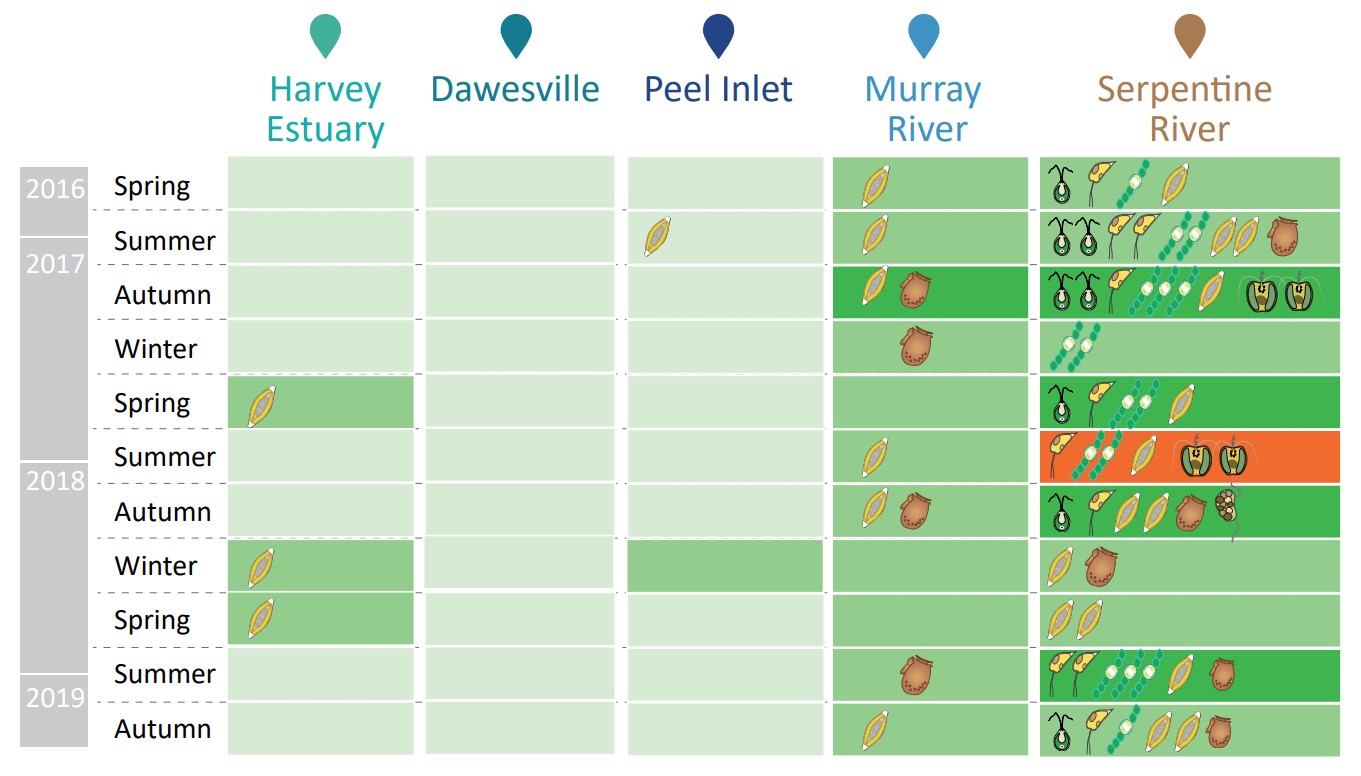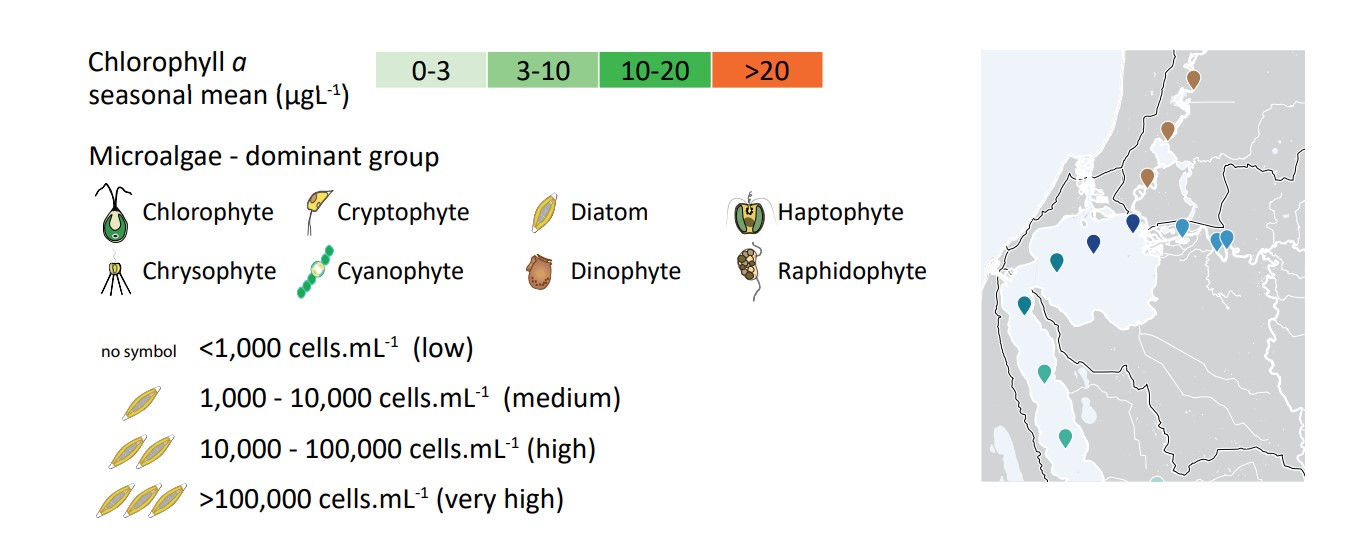Key points
- The Peel Inlet has good water quality free from persistent symptoms of nutrient enrichment.
- The Harvey Estuary is poorly flushed and shows poor water quality with summer hypersalinity, high nutrient concentrations and, at times, elevated microalgal densities.
- The estuarine river reaches are in poor health. The Waangaamaap Bilya (Serpentine River) has very high nutrient concentrations that fuel microalgal activity year‑round with frequent blooms of potentially harmful microalgae.
- Oxygen in the bottom waters of the Bilya Maadjit (Murray River) is persistently low and occasional microalgal blooms and fish kills occur.
- Excessive nutrients and climate change impacts are key threats to the health of the Bindjareb Djilba (Peel-Harvey estuary) ecosystem. Reducing nutrient losses from the catchments is essential to build resilience and allow the estuary to adapt, especially considering climate change pressures are projected to increase.
Microalgae
Microalgae, also known as phytoplankton, are tiny photosynthetic organisms which play a huge role in removing carbon dioxide from the atmosphere and generating the oxygen we breathe. As key components of healthy ecosystems, they provide food for invertebrates and fish. During the day they photosynthesise, which oxygenates the water. However, abundance of nutrients, warmer water temperatures and reduced water movement can lead to a rapid increase in the cell numbers of microalgae, promoting the occurrence of blooms. These blooms can be detrimental to aquatic ecosystems: they can reduce light availability to seagrasses; rapidly remove oxygen from the water when they decompose, causing fauna deaths; and certain species can produce toxins, which can be harmful to fauna such as fish, crabs, birds, and dolphins, as well as humans. We investigate whether there is a community of desirable and diverse species, or whether it is dominated by undesirable plants such as weeds. This can tell us if the microalgal community composition is healthy or unhealthy.
Harmful microalgal blooms are linked to nutrient enrichment in coastal and inland waters worldwide. These blooms can be a threat to human health, fish, marine mammals, and birds via toxins and/or very high algal cell densities resulting in gill irritation. Our monitoring and analysis program includes the identification and enumeration of all microalgal species, including the potentially harmful ones.
Key points:
- Diatoms were the dominant group in the estuary basins at low, or occasionally medium densities.
- Microalgal group composition patterns in the Murray and Serpentine rivers were very different to the estuary basins: diatoms and dinophytes were often co‑dominant during autumn in the Murray River, while there was a greater diversity of groups in the Serpentine River with some occurring seasonally at high to very high average cell densities.
- The Peel‑Harvey estuary had 57 potentially harmful microalgal species – high compared with other estuaries in the south‑west.


